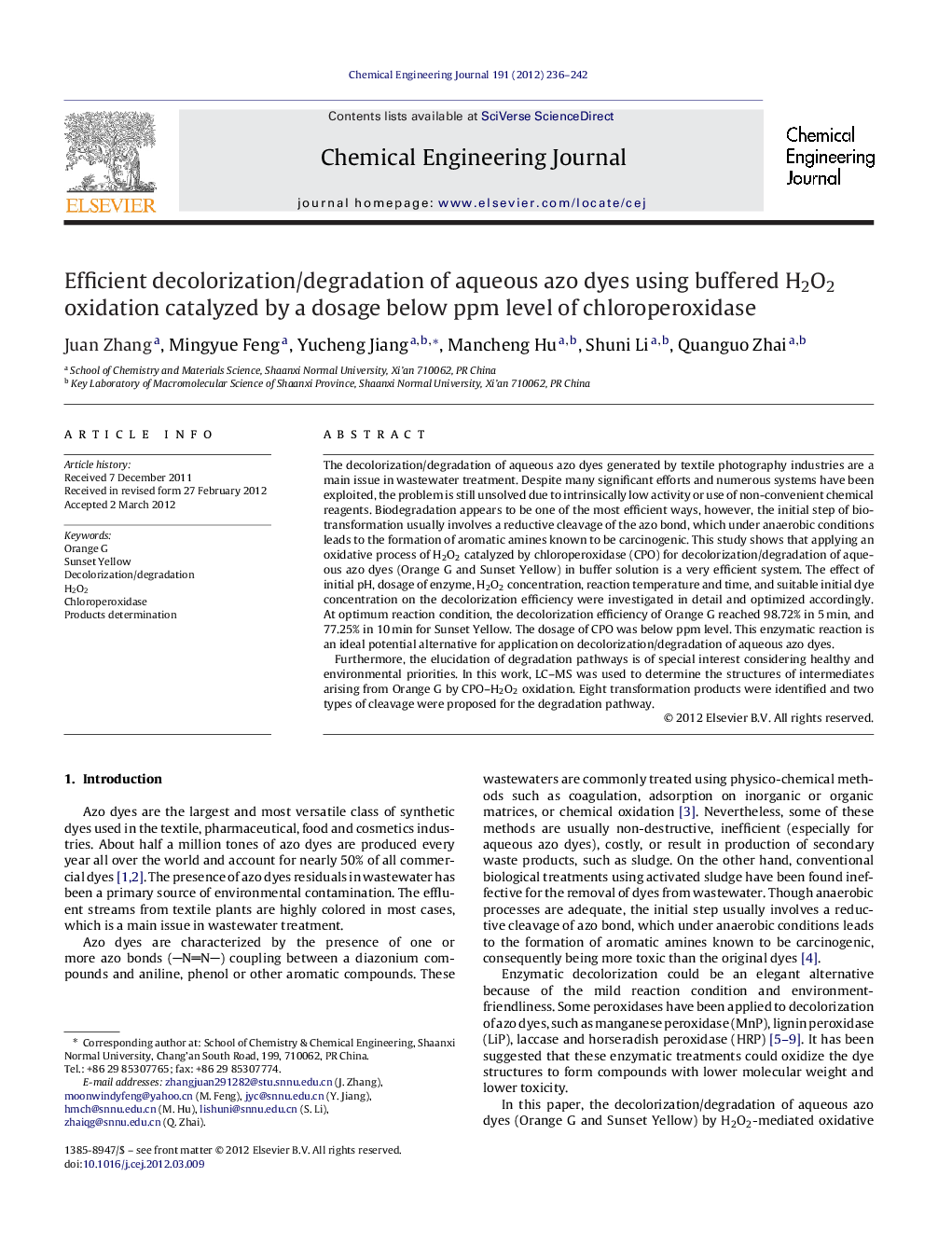| کد مقاله | کد نشریه | سال انتشار | مقاله انگلیسی | نسخه تمام متن |
|---|---|---|---|---|
| 149906 | 456440 | 2012 | 7 صفحه PDF | دانلود رایگان |

The decolorization/degradation of aqueous azo dyes generated by textile photography industries are a main issue in wastewater treatment. Despite many significant efforts and numerous systems have been exploited, the problem is still unsolved due to intrinsically low activity or use of non-convenient chemical reagents. Biodegradation appears to be one of the most efficient ways, however, the initial step of biotransformation usually involves a reductive cleavage of the azo bond, which under anaerobic conditions leads to the formation of aromatic amines known to be carcinogenic. This study shows that applying an oxidative process of H2O2 catalyzed by chloroperoxidase (CPO) for decolorization/degradation of aqueous azo dyes (Orange G and Sunset Yellow) in buffer solution is a very efficient system. The effect of initial pH, dosage of enzyme, H2O2 concentration, reaction temperature and time, and suitable initial dye concentration on the decolorization efficiency were investigated in detail and optimized accordingly. At optimum reaction condition, the decolorization efficiency of Orange G reached 98.72% in 5 min, and 77.25% in 10 min for Sunset Yellow. The dosage of CPO was below ppm level. This enzymatic reaction is an ideal potential alternative for application on decolorization/degradation of aqueous azo dyes.Furthermore, the elucidation of degradation pathways is of special interest considering healthy and environmental priorities. In this work, LC–MS was used to determine the structures of intermediates arising from Orange G by CPO–H2O2 oxidation. Eight transformation products were identified and two types of cleavage were proposed for the degradation pathway.
► An efficient enzymatic decolorization/degradation of two aqueous azo dyes was proposed.
► Efficiency was 98.72% in 5 min for Orange G, and 77.25% in 10 min for Sunset Yellow.
► 8 transformation products were identified ensuring no secondary poisonous products.
► Both symmetrical and asymmetrical splitting of the azo linkage were proposed for the pathway.
Journal: Chemical Engineering Journal - Volume 191, 15 May 2012, Pages 236–242